Mastering Basketball Fitness: A Comprehensive Guide
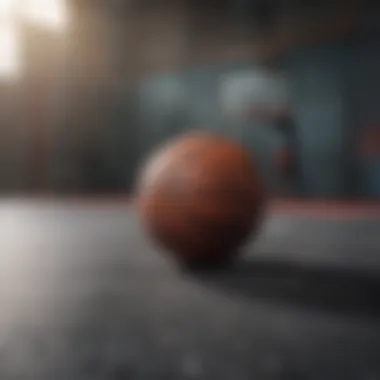
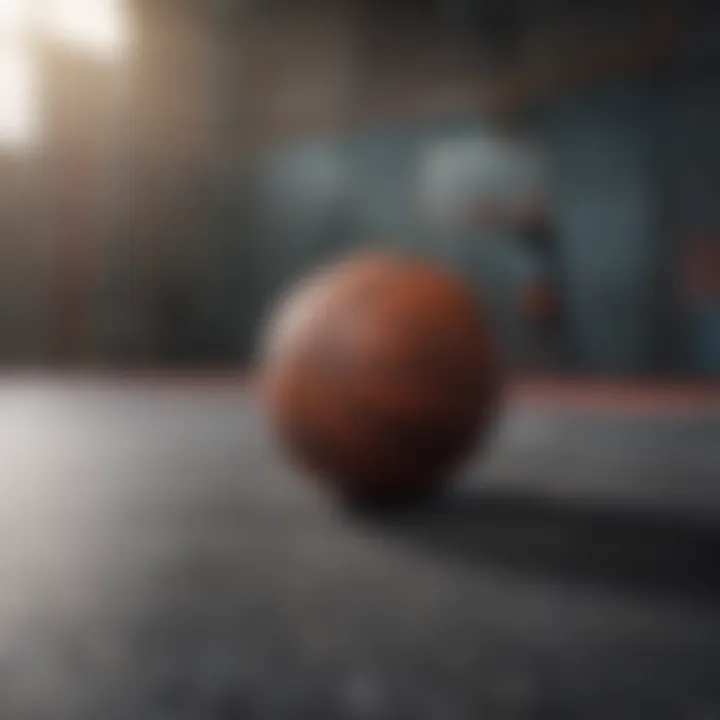
Intro
Getting back into basketball shape after a period of inactivity can feel challenging. Many factors contribute to physical fitness, especially in a sport as dynamic as basketball. Strength, agility, and endurance are all vital components that demand focused training. This article provides a systematic guide to help athletes regain their fitness and enhance their performance on the court. From skill development to tactical considerations, every aspect is important to return to peak form.
Techniques and Tips
Skill Development
To improve basketball performance, it is critical to focus on skill development. Skills such as dribbling, shooting, and passing are foundational. Setting up regular practice sessions targeting these skills can accelerate progress.
- Dribbling: Practice both stationary and moving drills. Try to use both hands equally.
- Shooting: Focus on form initially. Gradually increase range and speed.
- Passing: Work on accuracy and timing with a partner.
Practical Techniques
Implementing a structured training routine is essential. Here are a few practical techniques to consider:
- Interval Training: Combine short bursts of high-intensity exercise with periods of rest to improve cardiovascular fitness.
- Strength Training: Focus on muscle groups crucial for basketball, such as legs, core, and shoulders. Exercises like squats and lunges are effective.
- Agility Drills: Incorporate drills like ladder exercises and cone drills to increase foot speed and coordination.
Common Mistakes to Avoid
Being aware of common mistakes can streamline your training. Some key errors include:
- Neglecting Recovery: Recovery is just as important as training. Ensure rest days are included.
- Skipping Warm-Ups: Always warm up to prepare your body for intense activity.
- Focusing Excessively on One Area: Balance workouts to develop all necessary fitness aspects.
Gear and Equipment
Essential Gear for Beginners
When returning to basketball, having the right gear is important. Essential items include:
- Basketball Shoes: Proper shoes provide support and improve performance.
- Activewear: Comfortable athletic clothing is crucial for mobility.
- Basketball: A good-quality basketball is fundamental for practice.
Latest Innovations and Trends
Recent technology has enhanced training. For example, wearable fitness trackers can monitor heart rate and activity levels, allowing for personalized training adjustments. Smart basketballs, like the DribbleUp Smart Basketball, offer feedback on dribbling techniques and shooting form, making practices more effective.
Reviews and Comparisons
Before purchasing equipment, research is key. Websites like Reddit and specialized forums can provide valuable insights from other athletes. It's beneficial to compare different brands and products to find what suits your needs best.
Safety Measures
Essential Safety Gear
Using proper safety gear helps to minimize risks associated with basketball. Key items include:
- Knee Braces: Protects against injuries, especially for those with a history of knee issues.
- Ankle Supports: Aids stability during movements.
- Mouthguards: Safeguards teeth and jaws during play.
Best Practices for Safe Participation
Injury prevention starts with good practices. Here are important recommendations:
- Listening to Your Body: If you feel pain, take a break and assess your condition.
- Hydration: Maintain hydration levels, particularly during intense practices.
- Proper Technique: Focus on executing movements correctly to prevent strains and sprains.
Injury Prevention and Management
For those returning after injury, a gradual approach is imperative. Engage with a coach or physical therapist to create an appropriate rehabilitation plan. Remember to ease back into activities and avoid pushing limits too quickly.
Epilogue
Returning to basketball shape requires a multifaceted approach that balances skill development, physical training, and safety measures. By focusing on the right techniques and maintaining a well-structured plan, athletes can not only regain fitness but also elevate their performance on the court. This journey necessitates consistency, patience, and a commitment to learning, ultimately leading to a rewarding experience in the game.
Understanding Basketball Fitness
Understanding basketball fitness is a crucial foundation for anyone looking to return to the sport after a period of inactivity. Fitness in this context is not just about being able to shoot hoops; it encompasses a range of physical abilities that contribute to overall performance on the court. These include speed, agility, endurance, and strength. Each element plays a critical role in how well an athlete can perform, and recognizing their significance can guide effective training strategies.
The benefits of grasping basketball fitness extend beyond mere physicality. It helps athletes pinpoint their weaknesses and strengths. This can lead to tailored training plans that enhance personal performance. Additionally, understanding fitness levels can reduce the risk of injury, which is vital when resuming high-intensity sports like basketball after inactivity.
Defining Basketball Conditioning
Basketball conditioning refers to the physical preparation needed to perform optimally during a basketball game. It involves exercises and routines designed to improve athletic performance and is essential for sustaining a high level of play throughout the game.
Key Physical Attributes for Success
Basketball demands various physical attributes. Success hinges significantly on specific characteristics that influence performance during games.
Speed
Speed is a fundamental aspect of basketball. It determines how quickly a player can move across the court, making it vital for both offensive and defensive maneuvers. A key characteristic of speed is the ability to rapidly accelerate and decelerate. This ability helps players outmaneuver opponents and reach the ball faster. In this context, speed is a beneficial focus since quick reactions can determine the outcome of a play. However, athletes must also balance this with endurance to maintain their speed throughout the game.
Agility


Agility is another critical physical attribute. It refers to a player's ability to change direction quickly and efficiently while maintaining control. Agility is particularly significant for dodging defenders or adjusting to fast game dynamics. The unique feature of agility lies in its requirement for coordination and balance, making it essential for effective footwork. In practice, improved agility helps players navigate tight spaces on the court. However, developing agility may require specific drills, which some may find challenging but rewarding.
Endurance
Endurance is vital for sustaining performance over time. In basketball, players often engage in intensive bursts of activity, followed by periods of lower intensity. The hallmark of endurance in this sport is the ability to maintain performance throughout the game's duration. Building endurance can lead to fewer moments of fatigue, which in turn allows players to exert themselves more during critical moments. Nonetheless, focusing purely on endurance without strength training can be disadvantageous, as this might lead to a lack of muscular support.
Strength
Strength is essential for various aspects of basketball, including shooting, rebounding, and defending. It involves the capacity of muscles to exert force, which is vital for physical confrontations on the court. A key characteristic of strength training is its ability to enhance not only muscle mass but also bone density. This characteristic makes strength a powerful attribute in basketball. The unique aspect of strength is its multifaceted nature; it can greatly impact agility and speed if developed correctly. However, strength training requires careful management to avoid muscle stiffness, which can hinder overall performance.
Ultimately, finding the right balance between these attributes is essential for achieving optimal basketball fitness.
Assessing Your Current Fitness Level
Assessing your current fitness level is a critical step when getting back into basketball shape. Understanding where you stand physically allows for tailored training plans that suit your needs. This assessment informs you of your strengths and weaknesses, setting a clear starting point for improvement. By identifying specific areas requiring attention, you can optimize your training efforts and track your progress effectively.
Recognizing your current fitness level also helps prevent injuries. If you jump into intensive workouts without knowing your limits, you may risk strain or discomfort. Conversely, a clear assessment can build a solid foundation for gradual progression.
Self-Assessment Techniques
There are various self-assessment techniques to gauge your fitness level. One simple method is to conduct a fitness test. This can include a combination of exercises tailored to basketball, such as:
- Shuttle runs to test speed and agility.
- Vertical jump tests to measure explosive power.
- Timed sprints for endurance assessment.
Recording your performance in these tests provides valuable benchmarks. You may also want to evaluate your body composition through tools like calipers or scales, if accessible. Take note of how you feel during these exercises to gain further insight into your overall fitness.
Important points to consider during self-assessment:
- Be honest with your results.
- Focus on form and safety over speed or intensity.
- Retake assessments periodically to monitor progress.
Consulting a Professional
While self-assessment offers insight, consulting a professional can provide a more thorough evaluation. Trainers or specialists in sports science can deliver a comprehensive analysis of your fitness. They often utilize advanced methods, such as functional movement assessments, to identify strengths, weaknesses, and potential injury risks.
A professional can also help develop a customized training plan based on your level of fitness. Their expertise ensures that the plan aligns with your goals and considers your specific needs. Moreover, they can provide essential feedback and motivation during your fitness journey.
Creating a Training Plan
A well-structured training plan is essential for athletes returning to basketball shape. It enables focus on the specific physical and technical demands of the sport. By outlining a systematic approach, a training plan can guide your progress, ensuring you are working towards set objectives effectively.
The benefits of creating a training plan include defining a clear pathway towards achieving fitness goals, promoting adherence to a routine, and allowing for the tracking of improvements over time. Further, it can help balance different aspects of physical conditioning, such as strength, endurance, and skill development, preventing any one area from overshadowing another.
Setting Realistic Goals
Setting realistic goals is the first step in your training plan. Objectives should be specific, measurable, achievable, relevant, and time-bound (SMART). This structure helps in keeping motivation high and reducing feelings of frustration. It's wise to start with small, attainable goals, gradually progressing to more challenging targets as fitness improves.
Incorporating Strength Training
Bodyweight Exercises
Bodyweight exercises are a foundational aspect of strength training. They involve using your body weight to build muscle strength without requiring additional equipment. This form of training is particularly beneficial as it helps develop functional strength crucial for basketball moves. Bodyweight exercises can be easily adapted to suit individual fitness levels, making them accessible for everyone.
Some examples include push-ups, squats, and lunges, which enhance overall body control and stability. A significant advantage of bodyweight training is that it can be performed anywhere, which frees athletes from the limitations of a gym setting. However, progressive overload may become a challenge as strength increases.
Weightlifting Techniques
Weightlifting techniques provide another avenue for strength training. This method involves the use of external weights or resistance, enabling the development of power and muscle size. Weightlifting is a popular choice because it can be highly controlled and targeted to specific muscle groups. Exercises such as bench presses, deadlifts, and squats can be incorporated into your training regimen to build the necessary strength for basketball.
The unique feature of weightlifting is its capacity for progressive load, which allows for continuous adaptation and improvement. A potential disadvantage is that proper form is critical to avoid injuries, especially for those who may be returning from inactivity after a long period.
Developing Endurance
Long-Distance Running
Long-distance running is an effective method for building endurance, which is vital in basketball. It allows the heart and lungs to adapt to sustained physical exertion, helping improve overall fitness levels. One of the key characteristics of long-distance running is its simplicity; it requires nothing more than adequate shoes and open space.
This exercise is beneficial for developing aerobic capacity that supports longer games without fatigue. An advantage is that it can be scaled in distance as your fitness improves. However, long-distance might not always mimic the stop-and-start nature of basketball.
High-Intensity Interval Training
High-Intensity Interval Training (HIIT) is another effective strategy for enhancing endurance. It involves short bursts of intense activity followed by recovery periods. HIIT is beneficial as it allows athletes to improve cardiovascular fitness in a shorter amount of time compared to traditional steady-state cardio.
HIIT workouts can be exceptionally varied and tailored to include basketball-specific movements, keeping the routines engaged and relevant. One unique aspect is that it allows for flexibility in scheduling, making it easier to fit into busy lives. However, it can be physically demanding and may require some adjustment for those returning from extended breaks.
Enhancing Agility and Speed
Drills for Quick Footwork
Drills for quick footwork are essential for improving agility, which is critical for basketball players navigating the court. These drills can include ladder exercises or cone drills that enhance coordination and reaction times. The key characteristic is their ability to develop explosive movements required for sudden changes in direction.
A primary benefit is the reduction of the risk of injury, as better footwork can enhance stability. However, these drills can require space and may sometimes not sufficiently simulate game conditions.
Speed Workouts
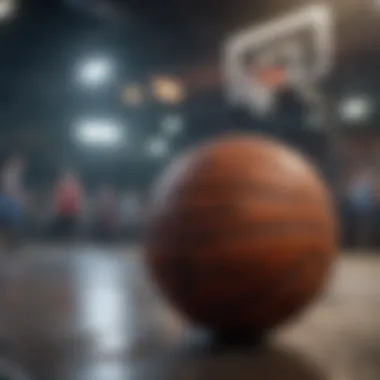
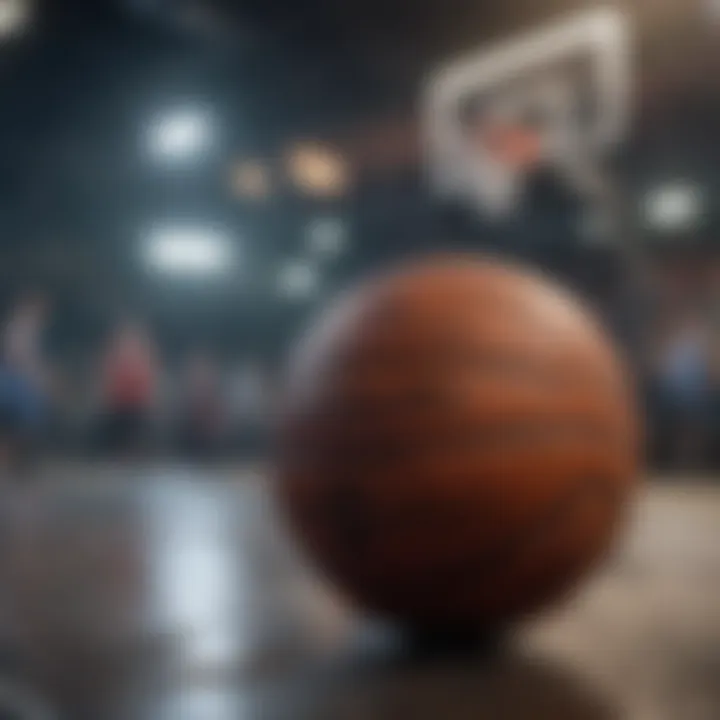
Speed workouts focus on maximizing stride power and reducing time on the court. They can include short sprints or resistance running. The main intention is to enhance all-out speed, which becomes crucial during fast breaks in a game.
Speed workouts are often targeted and precise, allowing athletes to hone in on their weaknesses. This can lead to immediate performance improvements. A downside could be the risk of overtraining if not balanced with recovery. Monitoring intensity is vital here.
"The right combination of strength, endurance, agility, and skill development will lead to noticeable improvements in your basketball capabilities."
In summary, a well-detailed training plan is vital for effectively regaining basketball shape. Each component plays a unique role in overall performance, and attention to setting realistic goals, incorporating various training methods, and monitoring progress is crucial.
Skill Development for Basketball
Skill development is crucial in getting back into basketball shape. While physical fitness forms a strong foundation, it is the specific skills that ensure a player can perform effectively on the court. Skills like dribbling, shooting, and defending not only aid in individual performance but also contribute to overall team dynamics. Without these skills, even an athlete in peak physical condition can struggle during games.
Focusing on skill development allows players to regain their confidence. When players remember how to execute techniques, they often feel more comfortable and motivated to return to the game. There are numerous benefits to enhancing skills:
- Improved Game IQ: Understanding of tactical play increases with skill practice.
- Higher Team Contribution: Better skills lead to effective play, making one a more valuable teammate.
- Injury Prevention: Proper skill execution can reduce the risk of injuries associated with improper movements.
Essential Dribbling Techniques
Dribbling is one of the fundamental skills in basketball. It allows players to move with the ball, create space, and set up plays. To improve dribbling, focus on different techniques, such as the crossover, behind-the-back, and hesitations. Each technique serves a unique purpose:
- Crossover: Essential for changing directions quickly.
- Behind-the-Back: Useful for protection against defenders while maintaining ball control.
- Hesitation: Can deceive opponents and create openings for drives to the basket.
Practicing these techniques in drills can enhance ball handling and control. Players should prioritize a low dribble stance, keep their head up, and utilize both hands.
Shooting Drills to Practice
Shooting is another vital skill that requires repetition and focus. To regain shooting proficiency, players should engage in various drills that emphasize form and accuracy. Key drills include:
- Form Shooting: Concentrates on the mechanics of the shot. It’s performed close to the basket with a focus on follow-through.
- Spot Shooting: Involves shooting from designated spots on the court, improving on-court pressure application.
- Free Throw Practice: Important for understanding rhythm and routine.
By incorporating these drills into a daily routine, players can boost their shooting percentages and confidence in hitting shots during games.
Defensive Skills and Footwork
Defense is often overlooked, yet it is just as crucial as offensive skills. Strong defensive skills can change the dynamics of a game. Players should concentrate on footwork, positioning, and anticipation. Key components to focus on:
- Staying Low: Drops the center of gravity for better stability.
- Defensive Slides: Improves lateral movement.
- Hand Positioning: Proper hand placement can disrupt passes and shots.
Drills focused on 1-on-1 defense and closeout skills can build these defensive habits. Solid defensive skills not only protect the basket but also lead to offensive opportunities through steals and fast breaks.
"Mastering skills is not a destination but a continuous journey that keeps improving one's game throughout their basketball career."
Nutrition and Recovery Considerations
Nutrition and recovery play a pivotal role in recovering basketball shape. Athletes often overlook these aspects while focusing primarily on physical training. However, nutritional choices and recovery strategies greatly influence performance and overall progress. A diet rich in essential nutrients supports energy levels, muscle repair, and optimum endurance. Additionally, effective recovery techniques minimize fatigue and help prevent injuries. Understanding these elements sets a solid foundation for any basketball training plan.
Importance of Balanced Nutrition
Balanced nutrition refers to consuming the right amounts of carbohydrates, proteins, fats, vitamins, and minerals. For basketball players, carbohydrates are a primary energy source, crucial before and after workouts. Proteins contribute to muscle repair and growth, while healthy fats are important for long-lasting energy. A well-rounded diet can lead to improved recovery, enhanced performance, and consistent training. Integrating fruits and vegetables also helps in staying healthy and maintaining immunity. Therefore, attention to nutritional balance cannot be overstated; it directly correlates with an athlete's ability to train effectively.
Hydration Strategies
Staying hydrated is crucial for optimal performance on the court. Dehydration can lead to fatigue, decreased coordination, and even heat-related illnesses. Athletes should drink water regularly, especially before, during, and after games or training sessions. It is recommended to consume electrolyte-rich beverages when engaging in extended or intense workouts, as these help in replenishing lost minerals. Monitoring fluid intake should become a habit, and using a water tracking app could be beneficial. This ensures that the body remains hydrated and ready to perform.
Implementing Recovery Techniques
Recovery techniques are vital for athletes returning to basketball. Effective recovery leads to sustained training and performance improvements. Here, we delve into two critical components: Active Recovery and Rest and Sleep.
Active Recovery
Active recovery involves light physical activity after intense training sessions. This could include walking, cycling, or swimming at a low intensity. Active recovery promotes blood flow to muscles. This blood circulation aids in the removal of metabolic waste, facilitating faster recovery. An important characteristic of active recovery is its ability to keep the body engaged while reducing strain. Many athletes find it to be a beneficial option. However, caution is necessary to avoid overexerting oneself. Incorporating active recovery can improve mobility and flexibility, reducing soreness in muscles.
Rest and Sleep
Rest and sleep are essential for recovery. Quality sleep restores energy and repair muscles. Sleep also plays a significant role in cognitive function, crucial for making decisions during games. Many athletes prioritize rest, understanding that sleep quality affects performance. The unique feature of sleep lies in its regenerative properties, affecting physical health and mental sharpness. However, one must be aware of the potential for disrupted sleep due to stress or overtraining. Creating a restful environment and establishing a consistent sleep schedule can enhance sleep quality. Therefore, recognizing the importance of rest and sleep is instrumental to successful basketball training.
"Effective nutrition and recovery are not afterthoughts; they are essential components of athletic success."
In summary, both nutrition and recovery, when prioritized appropriately, foster a comprehensive approach to attaining basketball fitness. Focusing on balanced diets, adequate hydration, and thoughtful recovery strategies will contribute significantly to your training journey.
Monitoring Progress
Monitoring progress is a critical component in the journey to regain basketball fitness. By systematically tracking improvements in both physical fitness and skill levels, athletes can gain valuable insights into their training efficacy. This awareness not only helps to maintain motivation but also allows for timely adjustments to their regimen to optimize performance.
A structured approach to monitoring progress will enable you to analyze trends over time. It provides the feedback needed to establish if your conditioning plan is effective or if tweaks are necessary. Moreover, being aware of your progress can boost self-confidence as you witness tangible results from your efforts.
Keeping a Training Journal
A training journal serves as an essential tool for documenting workouts, activities, and progress. Keeping track allows for reflection on what methods are most effective. Writing down specific details such as exercises completed, duration, and perceived exertion helps in identifying strengths and weaknesses.
In addition, a journal can include notes about mood and motivation. A holistic view can then be assessed over time, helping to pinpoint patterns that impact performance. This practice is beneficial, as it encourages athletes to take their training seriously and fosters a sense of accountability toward their conditioning goals.
Evaluating Performance Metrics
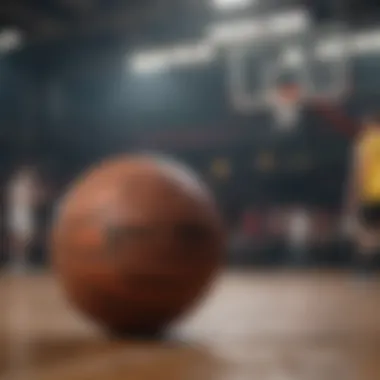
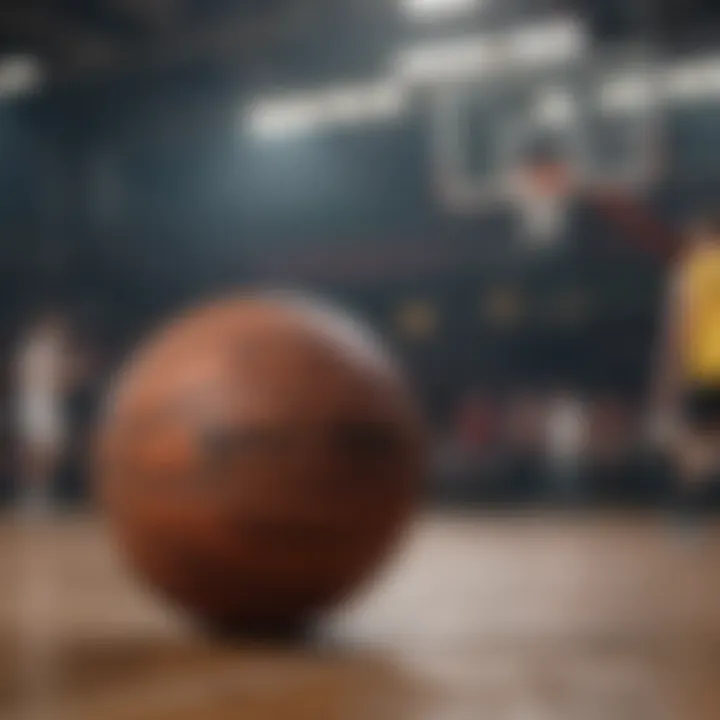
Performance metrics encompass various indicators that evaluate both physical and skill-based aspects of basketball conditioning. Regularly assessing these metrics can inform adjustments in training methods or focus areas.
Physical Performance Indicators
Physical performance indicators include a range of measurable aspects such as speed, strength, and endurance. They contribute significantly to improving overall basketball fitness.
The key characteristic of physical performance indicators is their quantifiable nature, making them a popular choice for athletes looking to see results. For example, measuring sprint times or vertical jump can provide consistent data on improvement.
One unique feature of physical performance indicators is their adaptability. They can be tailored to specific objectives or athlete needs, allowing for personalized training plans. However, a potential disadvantage is that focusing solely on these metrics might overlook technical skills that are equally important in basketball.
Skill Competency Tracking
Skill competency tracking involves regular evaluations of basketball-related skills such as shooting accuracy, dribbling, and defensive footwork. This aspect plays a crucial role in ensuring that physical improvements translate into effective on-court performance.
The central characteristic of skill competency tracking is its focus on the execution of specific basketball skills. It is widely regarded as beneficial because it emphasizes the practical application of physical fitness in game scenarios.
Its unique feature lies in the direct feedback it provides regarding skill levels. Evaluating skills helps athletes identify areas needing urgent attention. Nevertheless, reliance on this tracking may distract from strengthening physical attributes essential for heightened performance.
"Monitoring progress is not just about numbers; it's about understanding the quality of performance and constantly adjusting to improve."
Mindset and Mental Conditioning
The importance of mindset and mental conditioning in basketball cannot be overstated. While athleticism, skills, and strategy are crucial, the psychological aspects often dictate performance on the court. A strong mental state can help players overcome challenges, stay motivated, and enhance overall performance. For those looking to regain their basketball fitness, focusing on the mental side can be just as important as the physical aspects.
Developing a Competitive Mindset
To be successful in basketball, developing a competitive mindset is essential. This involves understanding that each practice and game is an opportunity to improve. Embracing competition, whether in drills or games, fosters resilience, enabling players to push through difficulties. Setting personal benchmarks and striving to meet them can help build this mentality.
Some techniques for fostering a competitive mindset include:
- Visualization: Picture yourself performing well in crucial situations. This helps in creating a mental blueprint for success.
- Self-talk: Use positive affirmations to reinforce your confidence. Saying things like "I am strong" or "I can do this" can shape your attitude.
- Goal Setting: Define clear, achievable goals for practices and games. This gives you something to aim for, increasing your focus and drive.
- Embrace Failure: Learn to see failure as part of the process. Each setback can provide valuable lessons.
Mental Strategies for Performance
Performance is not only determined by physical training but also by mental preparedness. Mental strategies play a significant role in how players handle pressure during games and practices. Here are some effective strategies:
- Mindfulness Training: Being present helps in reducing anxiety and maintaining focus. Practice breathing exercises or meditation to cultivate this awareness.
- Routine Development: Establish pre-game or pre-training routines. These can create a sense of calm and readiness, helping athletes cope with stress before competitions.
- Focus Techniques: Train your mind to concentrate on the task at hand. Use cues from your environment to stay grounded during games.
- Mental Rehearsal: Practice scenarios mentally to prepare for various situations. This can increase confidence in your abilities when facing real competition.
"Mental strength is key for achieving athletic success. It can be the difference between playing well and playing poorly."
By integrating these elements into training, players not only enhance their skills physically but also build a robust mental framework. This dual approach is vital for effective re-entry into basketball and can significantly boost performance.
Integrating into Team Play
Integrating into team play is essential when transitioning back into basketball. Individual skill development is important, yet the true essence of the game resides in teamwork. Mastering the individual aspects of basketball—like dribbling, shooting, and conditioning—must be coupled with a solid understanding of team dynamics. The ability to synergize with teammates can determine the outcome of a game, fostering an environment where individual skills shine through collective strategy.
Understanding Team Dynamics
Team dynamics refer to the psychological and behavioral relationships between players in a basketball setting. Recognizing these dynamics can enhance a player's contributions. Each team has its unique culture and style, shaped by the personalities and skill sets of its members. Success often hinges on players recognizing their roles and adapting to others.
Key elements to consider include:
- Roles and Responsibilities: Every player contributes in specific ways—scorers, defenders, and playmakers all have unique tasks in team play.
- Chemistry: Players who understand one another's tendencies can anticipate movements and pass more effectively. This chemistry can only develop through practice and regular interactions.
- Trust and Communication: A trusting environment allows players to take risks and support one another. Trust is built over time and requires open lines of communication.
Effective Communication on the Court
Communication is vital on the basketball court. It can be verbal or nonverbal, but effective communication ensures that all players are on the same page. Teams that communicate well are usually more successful, as it helps coordinate plays and assists in defensive setups.
Ways to enhance communication include:
- Use of Signals: Quick hand gestures or eye contact can convey messages efficiently without disrupting the flow of the game.
- Calling Plays: Clearly stating plays helps the entire team know what strategy to adopt at any moment.
- Encouragement: Positive reinforcement can strengthen team spirit. A supportive teammate can have a significant impact on individual performances.
Effective team play is not just a matter of individual talent; it hinges on how well players can interact, support, and communicate with each other on the court.
Final Thoughts on Returning to the Court
Returning to basketball after a significant break is not just about physical readiness but also entails mental and emotional preparation. This section emphasizes the importance of adopting a holistic perspective when approaching your return to the court. By understanding the multifaceted nature of this journey, from technical skills to mental conditioning and teamwork, players can navigate the transition more effectively.
Here are key elements to consider as you step back into the game:
- Progressive Adaptation: Understanding that your body has to adjust back to the demands of basketball is essential. Each session should build on the last, without pushing too hard too soon, reducing the risk of injury.
- Mindset Matters: Transitioning back into team play requires self-acceptance of your current abilities. Embrace the idea that improvement takes time and be patient with yourself.
"Success is the sum of small efforts, repeated day in and day out."
- Community Connection: Basketball is a team sport. Re-engaging with teammates and establishing rapport is crucial. Positive team dynamics enhance not only performance but also the enjoyment of the game.
Embracing the Journey
Every player’s return journey is unique. Embracing each step of this process encourages psychological resilience. It's important to focus on the personal growth that comes with each practice and game. Celebrate small victories along the way, such as nailing a difficult drill or improving your shooting percentage.
Incorporating self-reflection into your regular routine can be beneficial. Consider keeping a journal to note progress, frustrations, and triumphs. This will help to keep your motivations high and provide clarity on what to work on as you evolve.
Continuing the Progress
Improvement in basketball requires ongoing effort. Completing your training plan is only the beginning. Continuing progress means setting new goals, refining skills, and expanding your capabilities. This could involve seeking periodic feedback, whether from a coach, peers, or through self-analysis of your play.
Regularly assess your development in both fitness and skills. Adapt and modify your training program to make sure it remains challenging. Participating in small-sided games can help maintain competitiveness while applying your developed skills in situational contexts.
In summary, returning to basketball shape is more than just physical training; it involves a comprehensive approach to nurture both body and mind. The discipline of training, combined with community engagement and personal growth, will no doubt enhance your experience and success on the court.







